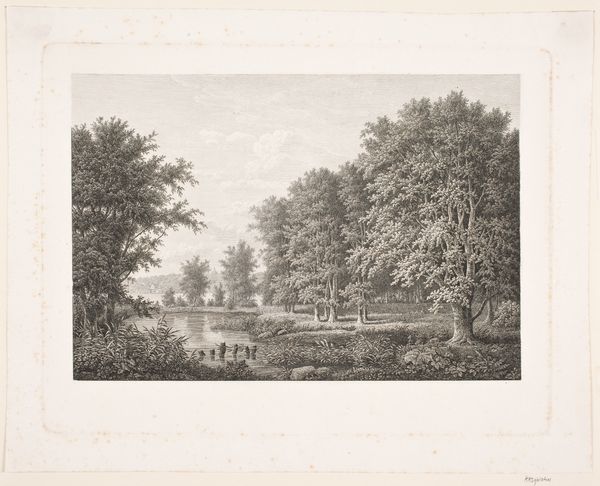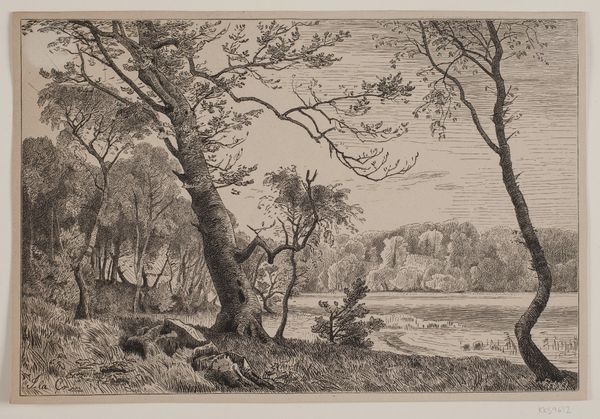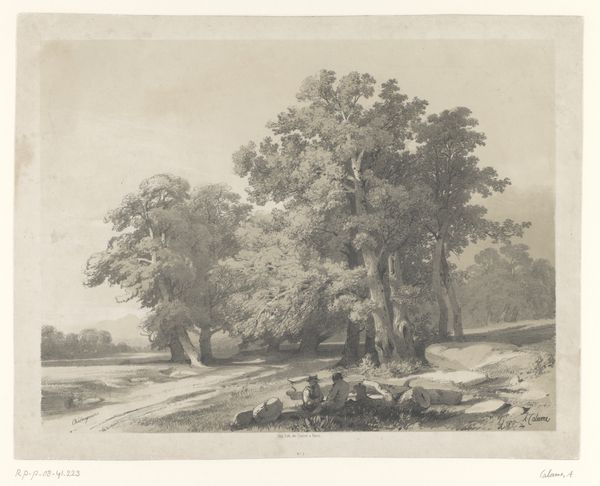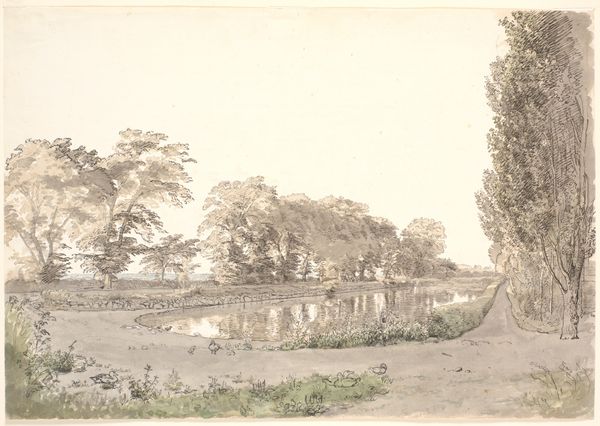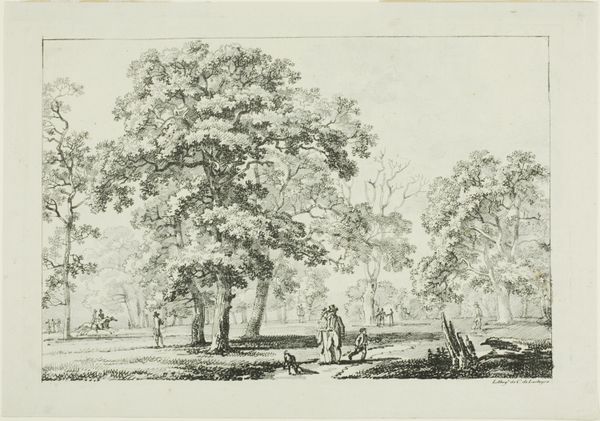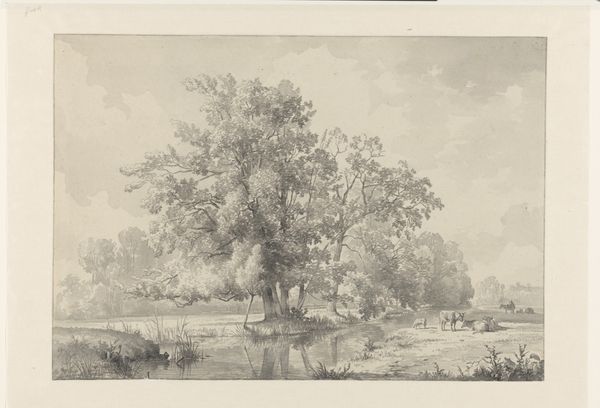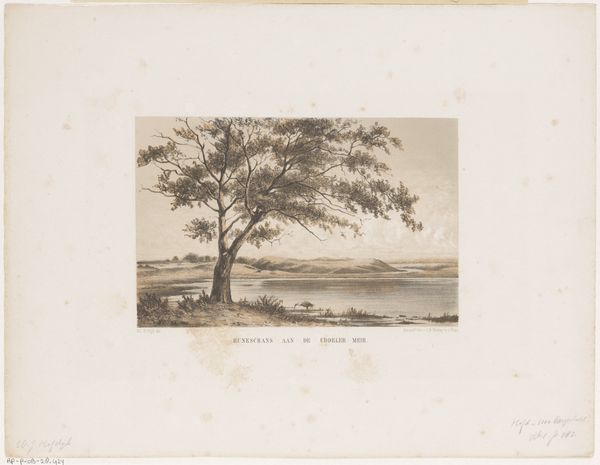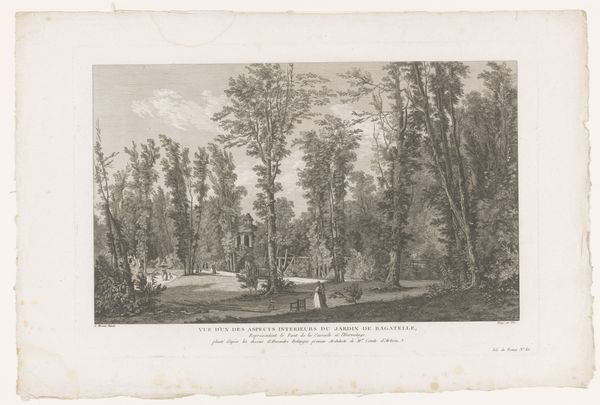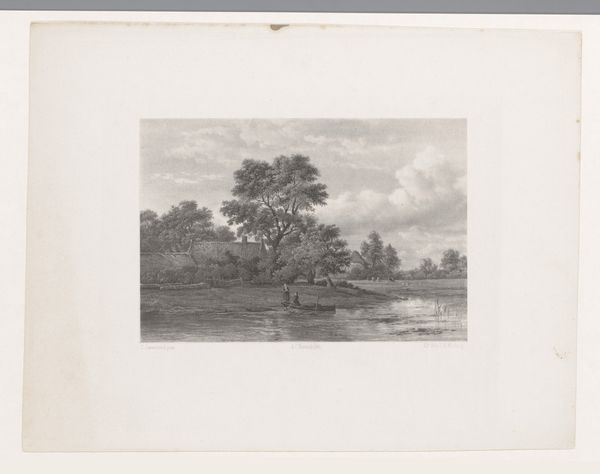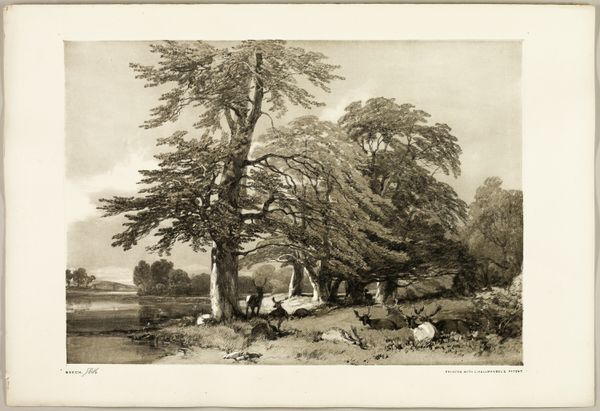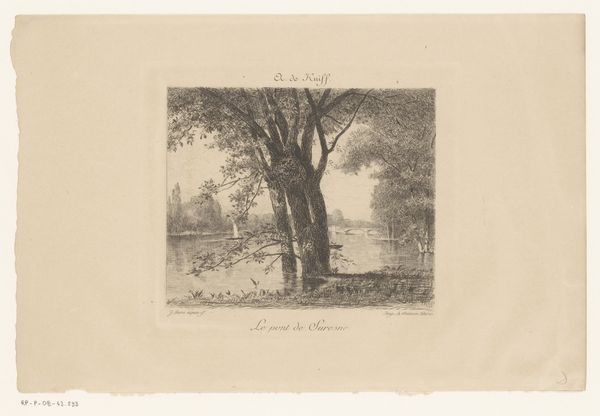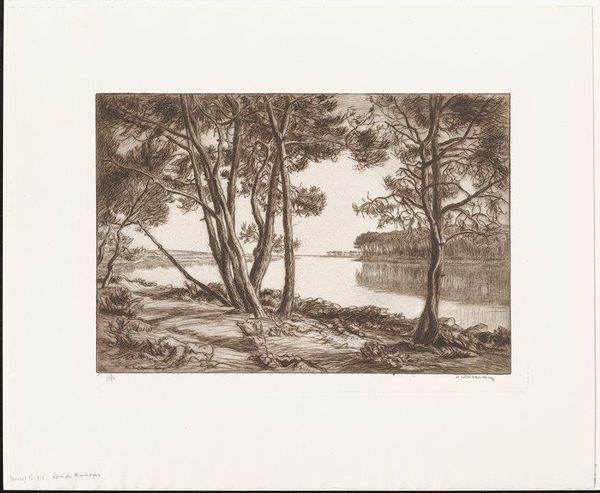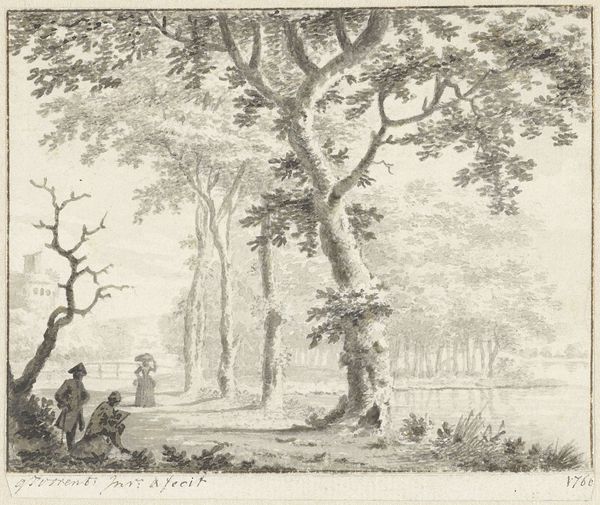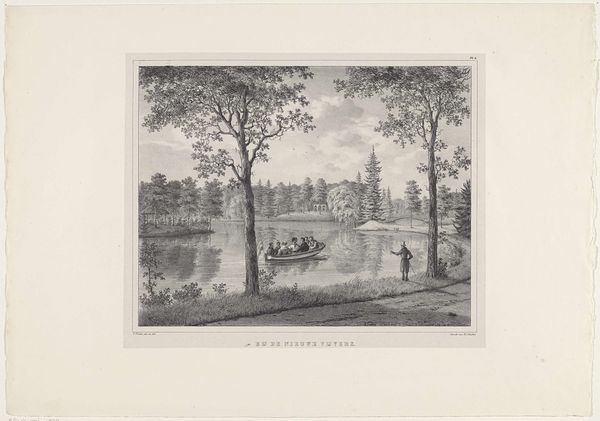
print, etching, engraving
# print
#
countryside
#
impressionism
#
etching
#
landscape
#
natural light
#
form
#
line
#
naturalism
#
engraving
#
realism
Dimensions: 135 mm (height) x 252 mm (width) (billedmaal)
Curator: Let's turn our attention to J. Hildebrand’s "Forårseftermiddag ved Fuglesangsøen i Dyrehaven," or "Spring Afternoon by Fuglesangs Lake in Dyrehaven," an etching and engraving from 1880 held here at the SMK. Editor: It feels so calm, so… perfectly observed. The detail is incredible! It looks like a photograph, yet softer, almost dreamlike. Is that natural light catching the leaves? Curator: Indeed. Hildebrand’s print is a wonderful example of naturalism, showcasing the late 19th-century desire to capture landscapes with scientific accuracy. It depicts a specific location—Fuglesangs Lake in Dyrehaven, a royal deer park north of Copenhagen. Editor: The trees dominate the foreground. That large tree on the right – it’s so majestic! And the lake reflecting the light creates this ethereal, otherworldly glow. Do the trees in the image possess any sort of significance? Are these certain Danish national symbols, or species with inherent value to the nation? Curator: The use of the forest as a cultural symbol was certainly a popular one within artistic circles at the time, as this new medium and technology enabled easier reproduction, and greater appreciation for national lands and resources as locations for recreation among upper-class and wealthy families. Editor: That's intriguing! There's also a very tranquil, almost Arcadian quality about the composition. Curator: I agree. There’s an emphasis on line and form, characteristic of much landscape art from the period. Editor: It evokes a sense of idealized nature, of a world untouched by industrial progress. It speaks of the enduring beauty of the Danish landscape, as imagined and promoted by political figures and public servants alike. Curator: Exactly. Hildebrand uses a newly viable and reproducible print technology to not only meticulously render detail but also shape a narrative around Denmark's natural environment, reflecting broader social values of landscape appreciation and national identity. Editor: The image really shows an idealized and accessible depiction of nature. One that brings a real reverence for the enduring qualities and significance of place that persist for generations. Curator: Precisely, and his work provides a fantastic lens through which to understand 19th-century Denmark.
Comments
No comments
Be the first to comment and join the conversation on the ultimate creative platform.
